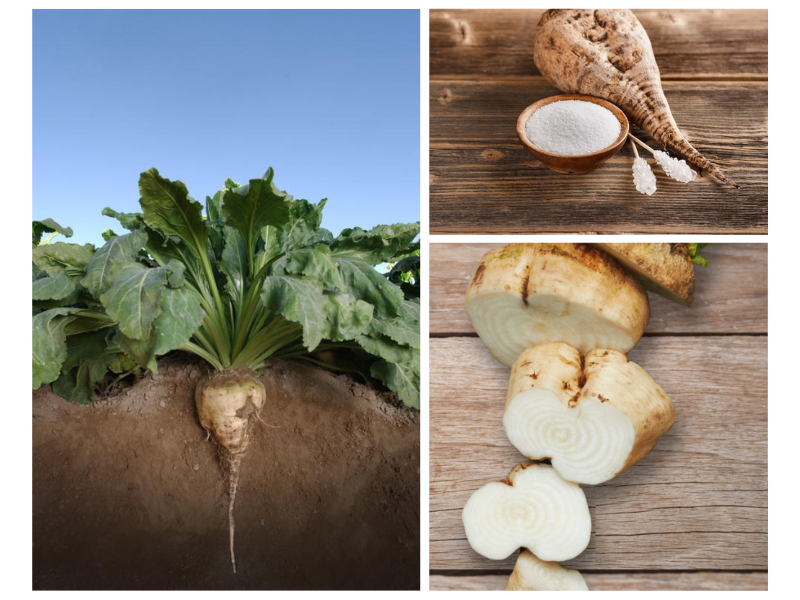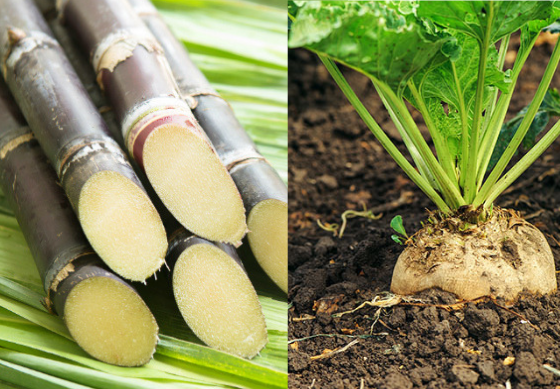The Ultimate Contrast: Beet Sugar vs. Cane Sugar Explained
The comparison in between beet sugar and cane sugar offers a remarkable exploration of two predominant sweeteners in the cooking globe. While both sugars share a common make-up of sucrose, their beginnings, processing approaches, and taste profiles deviate substantially.
Origins of Sugar Resources
The beginnings of sugar sources are primarily rooted in 2 distinct plants: the sugar beet and the sugar cane. Sugar cane, a tropical yard belonging to Southeast Asia, has been grown for over 2,500 years. Historically, it was first tamed in New Guinea and later spread out to India, where it ended up being an integral component of the culture and economic situation. The procedure of extracting sugar from cane became reputable, leading to its prominence in trade during the Center Ages.
In contrast, sugar beet is a reasonably modern resource, developed in Europe during the late 18th century as a feedback to sugar cane lacks. The plant grows in pleasant climates, making it ideal for cultivation in regions such as France and Germany. The effective extraction of sugar from beetss noted a substantial agricultural innovation, as it provided an alternate to cane sugar, particularly throughout durations of profession disruption.
Both plants have played critical roles in shaping the worldwide sugar sector. Their distinctive growth environments and historical contexts highlight the variety of sugar sources, inevitably affecting local agricultural practices and economic advancement.

Handling Approaches Clarified
Numerous handling techniques are employed to extract sugar from both sugar beet and sugar cane, each tailored to the specific features of the resource product. When it comes to sugar beetss, the process starts by gathering the root and then cleaning it to eliminate soil and impurities. The beetss are then cut right into thin strips, called cossettes, and based on warm water extraction, which liquifies the sugar. The resulting juice goes through clarification, where lime and warmth are made use of to eliminate impurities. This juice is after that concentrated with evaporation and condensation, generating raw sugar.
On the other hand, sugar cane processing entails a different approach. Initially, the cane is gathered and mechanically squashed to remove the juice. This juice is after that made clear, generally utilizing heat and lime, to get rid of impurities. The cleared up juice is focused with dissipation, comparable to beet sugar processing, prior to crystallization occurs. Both procedures finish in the manufacturing of raw sugar, which might undergo additional refining to attain the desired purity and quality. In spite of the distinctions in their first handling stages, the end items are greatly similar, resulting in sugar that is chemically indistinguishable.
Nutritional Differences

When comparing beet sugar and cane sugar, noteworthy dietary distinctions arise, though they are typically refined. Both kinds of sugar are mostly made up of sucrose, giving roughly the exact same calorie material-- roughly 4 calories per gram. The differences exist in their trace mineral web content and the presence of particular substances that might have very little nutritional implications.
Beet sugar contains small quantities of calcium, iron, and potassium, while cane sugar commonly offers somewhat greater concentrations of these minerals. Furthermore, cane see this here sugar may retain more natural molasses throughout processing, which can add to map amounts of anti-oxidants and various other valuable substances. This is particularly real for much less polished varieties, such as raw cane sugar.
Regardless of these differences, both beet and cane sugars are primarily made up of easy carbs, with a high glycemic index, bring about similar effects on blood sugar levels. Therefore, while there are minor dietary distinctions, the general health impact of taking in either type in moderation stays greatly equivalent. beet sugar vs cane sugar. Individuals seeking to decrease sugar intake for health factors need to think about both kinds with find here equal analysis, focusing on overall nutritional patterns instead of the source of sugar
Taste Accounts Compared
Taste accounts of beet sugar and cane sugar exhibit unique qualities that can influence their cooking applications. While both sugars are chemically comparable, their flavor nuances can influence food and drink results. Cane sugar, frequently viewed as having a much more intricate, nuanced sweetness, is acquired from the high yard of the sugar cane plant. This range has a tendency to impart a subtle, fruity touch, improving the tastes of baked products and confections.
In contrast, beet sugar, removed from sugar beetss, is understood for its cleaner, a lot more straightforward sweetness. This quality makes it especially ideal for dishes needing a neutral sweetening agent that allows various other tastes to radiate. Some cooking experts say that beet sugar may leave a somewhat natural aftertaste, which can be unwanted in delicate desserts.
In addition, the understanding of sweet taste strength differs between the 2, with some cups recognizing cane sugar as sweeter compared to beet sugar at equal measurements. Eventually, the choice in between beet and cane sugar may depend upon the details application, with each sugar offering one-of-a-kind features that can improve or enhance numerous meals. Comprehending these differences enables notified decisions in culinary practices.

Environmental Impact
The ecological influence of sugar production-- whether from beet or cane-- has actually gathered boosting attention in the last few years because of its effects for sustainability and environmental wellness. Both sugar resources display distinctive environmental footprints, influenced by agricultural methods, land usage, click resources and source usage.
Cane sugar manufacturing typically necessitates large areas of exotic land, which can cause logging and loss of biodiversity. Furthermore, the cultivation of sugarcane is regularly connected with high water use and significant pesticide and fertilizer application, adding to soil deterioration and water air pollution.
Alternatively, beet sugar is primarily grown in warm regions, normally needing less water and land. Its cultivation can still entail the usage of chemical inputs, influencing neighborhood ecological communities. The energy-intensive processing of beet sugar can contribute to greenhouse gas exhausts.
Lasting farming techniques and developments in modern technology are necessary for mitigating the ecological effects of sugar manufacturing. Organic farming techniques, integrated bug monitoring, and effective water use can enhance the sustainability of both beet and cane sugar markets, inevitably resulting in a reduced ecological impact and a much healthier earth.
Verdict
In recap, the comparison between beet sugar and cane sugar highlights both resemblances and distinctions that affect their application. While both kinds of sugar share a primary make-up of sucrose, their flavor profiles, refining methods, and ecological effects vary substantially. Cane sugar is defined by its complex sweet taste, while beet sugar offers a much more uncomplicated preference. Inevitably, the choice between these two sugars need to be led by details culinary demands and ecological factors to consider, enabling for educated decision-making.
The beginnings of sugar sources are mainly rooted in two distinct plants: the sugar beet and the sugar cane.Numerous processing techniques are employed to extract sugar from both sugar beet and sugar cane, each customized to the specific features of the resource product.Beet sugar contains little quantities of potassium, calcium, and iron, while cane sugar typically provides a little higher concentrations of these minerals.In spite of these differences, both beet and cane sugars are mainly made up of easy carbs, with a high glycemic index, leading to comparable results on blood sugar levels. Cane sugar, typically viewed as having a more complicated, nuanced sweet taste, is acquired from the high grass of the sugar cane plant.